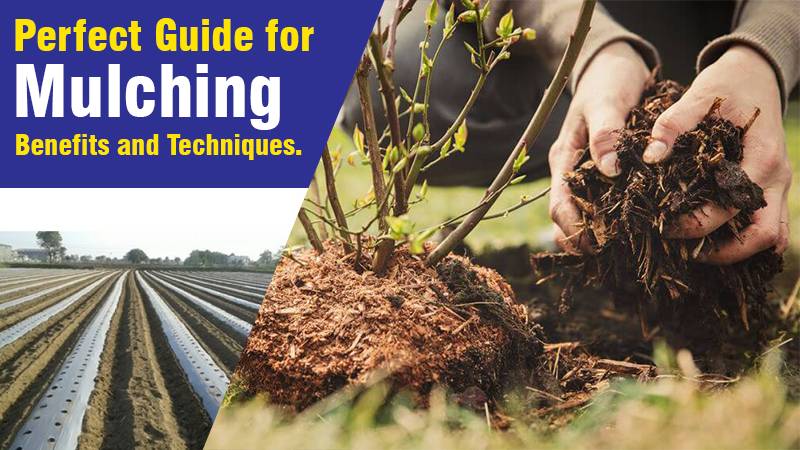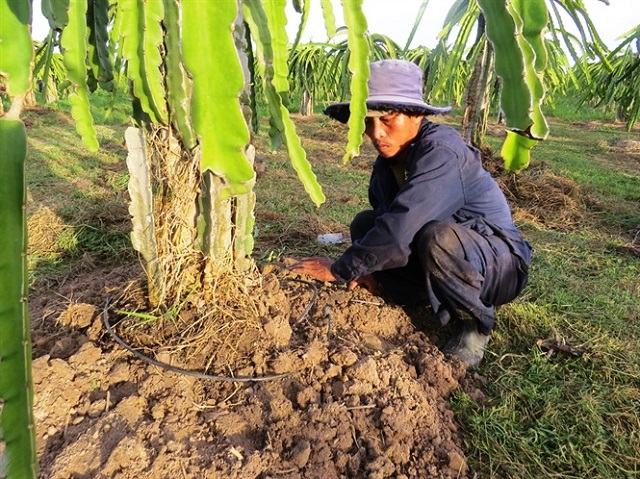In the intricate tapestry of horticulture, the practice of mulching emerges as a potent tool for nurturing plant health and enhancing agricultural productivity. Within the realm of dragon fruit cultivation, mulching plays a pivotal role in retaining moisture and suppressing weeds, fostering optimal growing conditions and promoting robust yields. Let’s embark on a journey to explore the nuances of mulching in the context of dragon fruit cultivation, uncovering its benefits, techniques, and practical applications.
Table of Contents

Exploring the Concept of Mulching
Mulching entails the application of organic or synthetic materials to the soil surface around plants. This protective layer serves multiple purposes, including retaining moisture, regulating soil temperature, and inhibiting weed growth. By creating a barrier between the soil and the surrounding environment, mulching fosters a conducive microclimate for plant growth while minimizing competition from invasive vegetation.
The Role of Mulch in Horticulture
In horticultural practices, mulching is revered for its versatility and efficacy in addressing common challenges such as moisture loss, soil erosion, and weed infestation. Whether employed in orchards, gardens, or agricultural fields, mulching serves as a cornerstone of sustainable cultivation, promoting soil health, water conservation, and ecosystem resilience.
Harnessing the Benefits of Mulching in Dragon Fruit Cultivation

Moisture Retention: A Key Consideration
The arid conditions prevalent in many regions conducive to dragon fruit cultivation underscore the importance of moisture retention. By applying a layer of mulch to the soil surface, users create a protective barrier that minimizes evaporation, conserving precious moisture and reducing the frequency of irrigation. This strategic approach to water management not only promotes efficient resource utilization but also mitigates the risk of drought stress, enhancing plant health and vitality.
Weed Suppression: A Natural Solution
Invasive weeds pose a significant threat to the health and productivity of dragon fruit orchards, competing for resources and creating a hostile environment for plant growth. Mulching serves as a natural solution to this perennial problem, effectively suppressing weed emergence and proliferation. By smothering weed seeds and inhibiting their access to light, mulch prevents germination and establishment, reducing the need for chemical herbicides and manual labor while maintaining a pristine growing environment.
Exploring Mulching Techniques and Materials
Organic Mulches: Nurturing Soil Health
Organic mulch materials, such as compost, straw, or wood chips, are favored for their ability to enrich the soil with organic matter and nutrients. As these materials decompose over time, they contribute to soil structure and fertility, enhancing microbial activity and promoting root development. Additionally, organic mulches confer insulation benefits, moderating soil temperature fluctuations and protecting delicate root systems from extreme heat or cold.
Synthetic Mulches: Durability and Longevity
Synthetic mulch films, made from materials such as polyethylene or biodegradable polymers, offer distinct advantages in terms of durability and longevity. These impermeable barriers effectively suppress weed growth while conserving soil moisture and regulating soil temperature. Moreover, synthetic mulches are resistant to decomposition, providing long-lasting weed control and requiring minimal maintenance over extended periods.
Implementing Mulching Practices in Dragon Fruit Orchards

Application Techniques: Best Practices
When applying mulch in dragon fruit orchards, users should adhere to certain best practices to maximize effectiveness and efficiency. It is essential to ensure uniform coverage of the soil surface, leaving no gaps or exposed areas where weeds can proliferate. Maintaining a sufficient thickness of mulch layer, typically ranging from two to four inches, provides adequate insulation and weed suppression while allowing for proper air and water exchange with the soil.
Timing Considerations: Strategic Application
The timing of mulch application is critical to its efficacy in dragon fruit cultivation. Users should apply mulch during the establishment phase of plant growth, shortly after transplanting or planting cuttings. This early intervention creates a conducive environment for root development and minimizes weed competition during the critical stages of plant establishment. Subsequent mulch applications may be necessary as needed to maintain optimal growing conditions and weed control throughout the growing season.
Conclusion: Embracing Mulching as a Sustainable Practice
In conclusion, mulching emerges as a potent ally in the quest for sustainable and productive dragon fruit cultivation. By retaining moisture and suppressing weeds, mulch enhances soil health, conserves water resources, and promotes robust plant growth. Whether through the application of organic or synthetic materials, mulching offers users a versatile and effective solution to common challenges in horticulture. Embracing mulching as a fundamental practice in dragon fruit orchards not only cultivates a thriving growing environment but also fosters stewardship of the land for generations to come.
